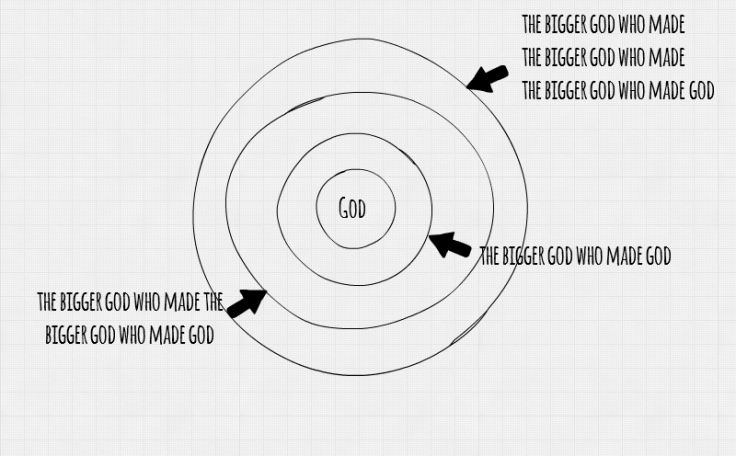This has to be the number one question kids ask about God. I remember back when I was still a young Christian, I was asked this question by a 4 year old son of a friend of mine. This boy was one of the most logical young kids I had ever met. He had figured out on his own that Santa Claus couldn’t be real, because he appeared at different shopping centres at the same time! I must admit that I don’t remember how I answered his question. It was probably something like “God was just always there. No one made Him.”
There is really nothing wrong with that answer, except that I think there is more to be said. When I was an atheist, I didn’t find the answer satisfying. Children just know intuitively that everything that exists has a maker (like their toys or books). So why should God be any different? Why is it okay for God to be an exception?
As it turns out, an “exception” is necessary in thinking logically about this issue. Two similar arguments help to explain why:
The First Cause argument: Everything that came to exist has a cause. Since the universe had a beginning, there cannot be an infinite series of past causes. Therefore, there must be a first cause which had no prior cause.
The Contingency argument: Things depend on other things for their existence. However, the chain of dependency cannot go on infinitely. Therefore, there must exist something (“Necessary Being”) upon which everything else depends, but which does not itself depend on anything else for its existence.
This exception, whatever it is, must be different to everything else. It must be outside of space and time (i.e. non-material and timeless). But it must also have the motive and ability to create everything else. When we survey what else exists, in all its complexity, we begin to see characteristics that point to a source much more like God than a force.
So with all this understanding in place, here is my attempt to answer the “Who made God?” question.
On a piece of blank paper, draw a circle and label it “God.” Then draw an outer circle and label it “The bigger God who made God.” Then draw yet another outer circle and label it “The bigger God who made the bigger God who made God.” And so on!

Then ask these questions:
If this is how things work, could you ever reach the end and find the “biggest” God? (No.)
Why not? (Because it has to keep on going!)—Some older kids might say that the idea of an infinite series makes sense, which it does in mathematics. But in reality, there can’t actually be an infinite series of past events.
When I did this exercise with my Grade 2 students, I only had to draw three outer circles before they started shouting out “you’ll keep on going forever!!”
Now, start again with a blank piece of paper. This time, draw a very big circle and label it “God.” Talk about how it makes much more sense if God was already there before everything else, and then made everything else. Give examples of things that God made as you draw circles inside the first circle, towards the center. As these circles get smaller, point out that even though we can’t see them, they could go on forever, which is how the future works. We needed to start with God at the beginning so that the past makes sense, and now we see how the future makes sense too.

These illustrations are not supposed to be comprehensive or represent watertight arguments. But my hope is that they will at least be a starting point for children to think logically about the nature of God and reality.

June 27, 2016 at 8:02 pm
I liked that. Good job.
LikeLike
June 28, 2016 at 12:29 am
Thank you 🙂
LikeLike